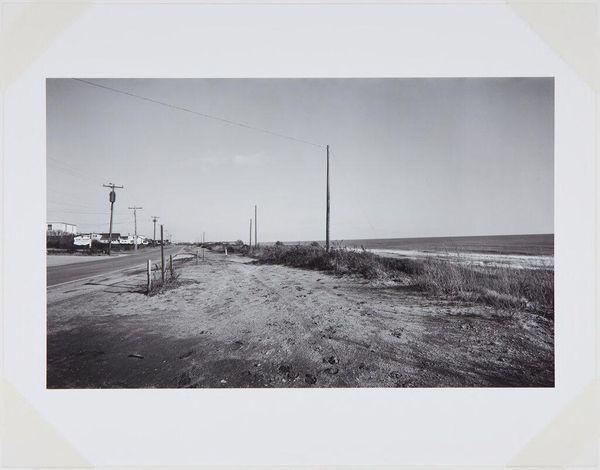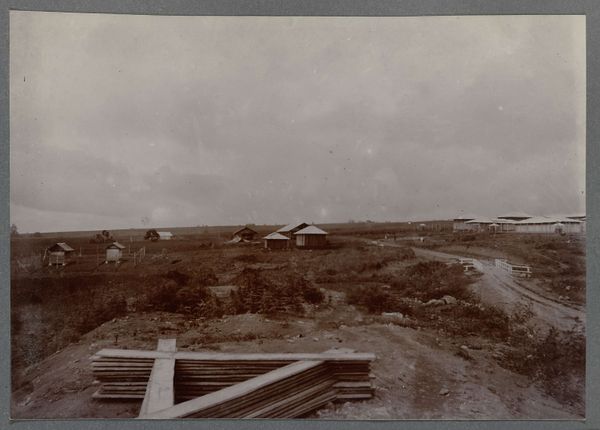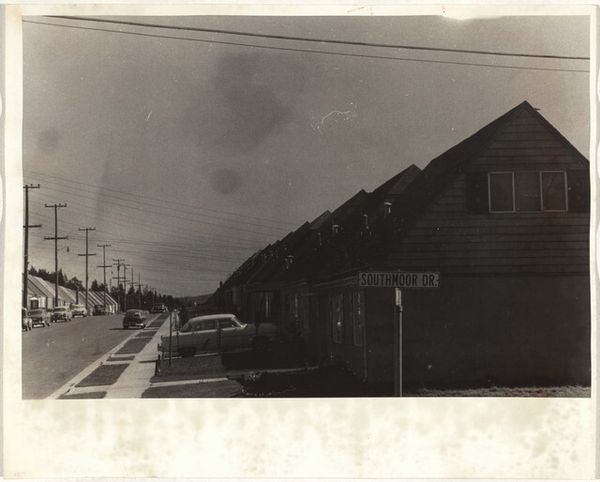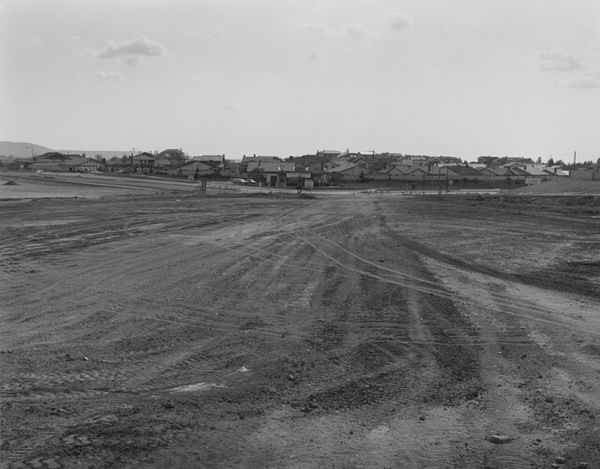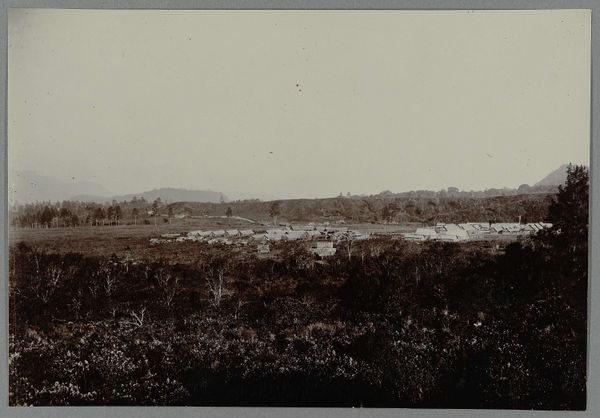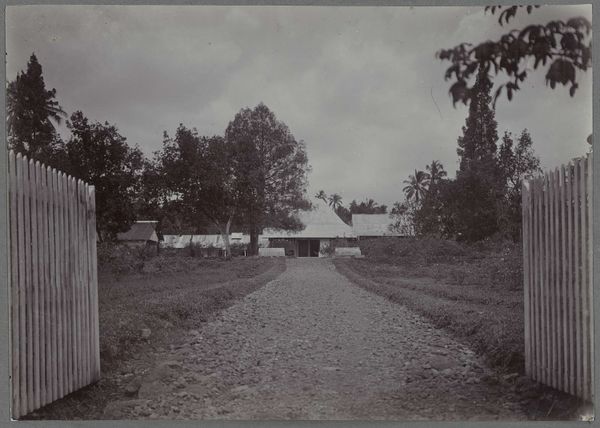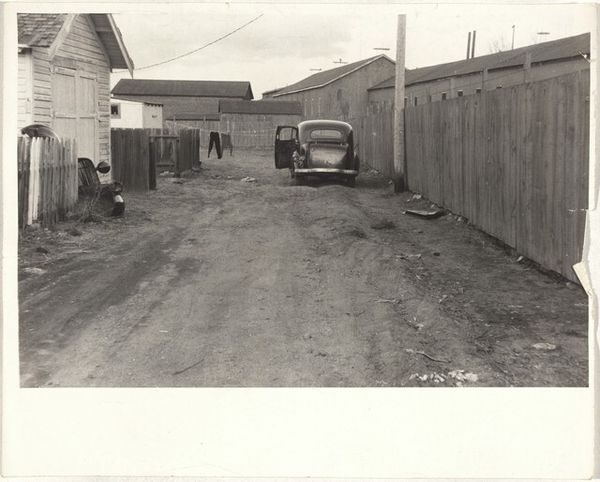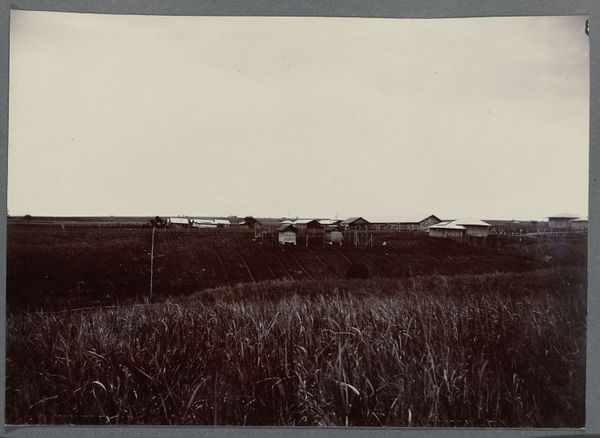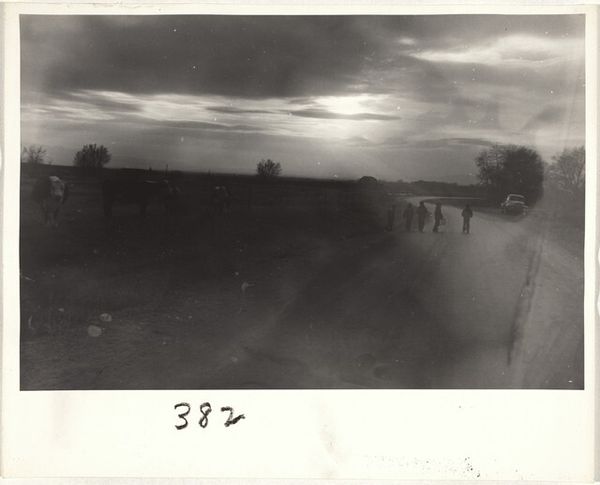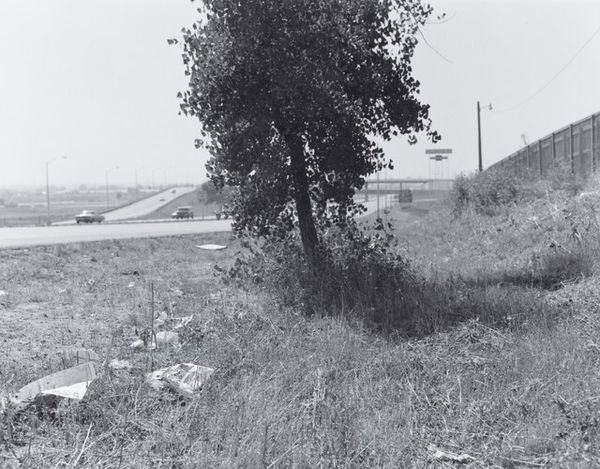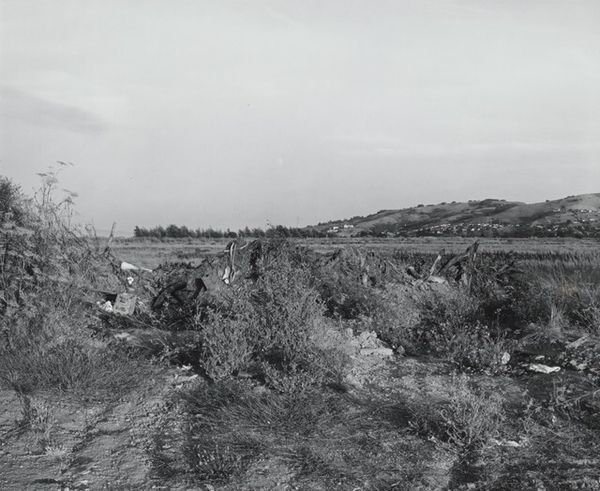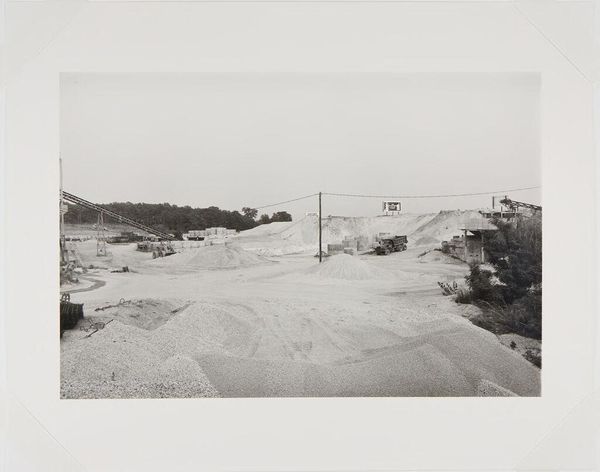
photography
#
landscape
#
photography
#
realism
Dimensions: height 67 mm, width 114 mm
Copyright: Rijks Museum: Open Domain
Editor: This is "Huizen te Moengo," a photograph taken sometime between 1925 and 1927. It's a striking black and white image, but also quite stark and somber. What stands out to you in this picture? Curator: The road immediately draws the eye, doesn’t it? It's wet, reflecting the muted sky above, almost like a mirror reflecting uncertainty. Think about the road as a symbol—what does it represent? Editor: Journey, maybe? Or connection between places? Curator: Exactly. But this road also speaks of something more. Notice how the houses are set back, almost secondary. The road is the prominent feature. Could this road be read as a forced passage? A line drawn across the landscape connecting these houses? The cultural memory embedded within roads like these in colonial contexts might represent not just connection, but extraction and control. What do you make of that in light of the image’s lack of people? Editor: I see your point. It's a landscape absent of the people who actually inhabit those houses, giving the road a kind of dominance. It's unsettling now that you mention it. Curator: The choice of black and white contributes as well, don’t you think? It strips away the vibrancy of life and leaves behind a stark record. Black and white in photographs from this era can signal a document, but it can also inadvertently lend an aesthetic distance from the realities it captures. It prompts questions about power and visibility—who is seen, and how? Editor: That's fascinating. I hadn't considered how the very absence of color could add layers of meaning and historical weight. I see a lot more now than I did at first glance.
Comments
No comments
Be the first to comment and join the conversation on the ultimate creative platform.

